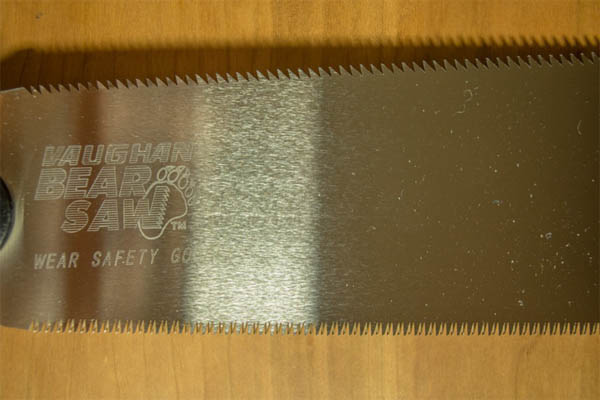Using Handsaws for Woodworking Projects: A Comprehensive Guide
In the world of woodworking, where the marriage of artistry and functionality thrives, handsaws stand as timeless tools that bridge the past with the present.
These steadfast companions of craftsmen have weathered the tides of time, retaining their essential role in shaping wood into exquisite creations.
This guide serves as a pilgrimage into the heart of handsaw utilization in woodworking, delving into their significance, exploring various techniques, elucidating safety precautions, and unraveling the intricate art of mastering these tools to elevate your woodworking projects to new heights of precision and craftsmanship.
Choosing the Right Handsaw
The journey of woodworking commences with the careful selection of the appropriate handsaw. A recap of the vital factors to consider:
- Material and Purpose: Allow the nature of your material – be it wood, metal, or a fusion of both – to guide your choice of handsaw. Consider the unique demands of your project’s purpose. When faced with the daunting task of cutting trees, a handsaw designed for aggressive cutting will make the process safer and more efficient, while projects requiring intricate joinery call for saws with fine teeth for precision.
- Teeth Per Inch (TPI): The rhythm of your cuts is orchestrated by the teeth per inch. Higher TPI yields delicate finesse, while lower TPI crafts robust and commanding strokes.
- Blade Length and Width: Envision your workpiece as a canvas, guiding your selection of blade length and width. Longer blades conduct sweeping strokes, while shorter ones conduct intricate, precise movements.
- Tooth Shape and Set: The nuances of tooth shapes – the crosscut and the rip – along with the intricacies of tooth set define the texture of your cuts and the efficiency of sawdust removal.
- Handle and Grip: Ergonomics and comfort interlace in the grasp of the handle, dictating the ebb and flow of your performance. Choose a handle style that resonates with your grip and reduces the wear of extended use.
- Blade Material: Each blade material composes a distinct chapter in the symphony of woodworking. Consider the nature of your projects and the longevity you seek.
- Power Source: While traditional handsaws are manually operated, advancements in technology have introduced powered options, such as electric or battery-powered reciprocating saws.
Safety Measures
While the handsaw is a partner in precision, safety takes precedence:
- Hand Placement: Position your hands deliberately, away from the path of the saw’s movement, ensuring a secure grip and optimal control over the tool.
- Protective Equipment: Outfit yourself in the armor of protection – safety glasses to shield your vision, gloves for tactile security, and hearing protection to temper the noise.
- Workspace Setup: Illuminate your workspace like a stage, reducing shadows that could obscure your cuts. A tidy environment, free from clutter, nurtures safe and confident movement.
Basic Handsaw Techniques
- Crosscutting: The handsaw glides across the wood’s grain with finesse, crafting clean, precise edges. A dance of harmony between the right saw, precise body positioning, and rhythmic strokes ensures a symphony of accurate cuts.
- Ripsawing: Cutting in parallel with the grain requires alignment and deft strokes. Choose the suitable saw and maintain a rhythm that leads to seamless, controlled cuts.
- Miters and Bevels: The canvas of woodworking broadens when you master angles. Miter boxes or guides become your allies, guiding you to execute perfect angles, while bevel cuts enhance your creative scope.
Advanced Handsaw Techniques
- Dovetailing: The hallmark of woodworking joinery, the dovetail, demands a delicate touch. Mastery of angles and depths ensures the creation of joints that are both structurally sound and visually striking.
- Coping: The handsaw becomes a brush, creating intricate curved cuts for moldings and trim. Navigating around corners with grace and finesse unveils seamless craftsmanship.
- Joinery: The tapestry of woodworking is woven with joinery. Detail saws and backsaws wield their magic, producing connections that are as sturdy as they are exquisite.
Maintaining and Sharpening Handsaws
To keep the handsaw’s melody harmonious:
- Cleaning the Blade: Regularly cleanse the blade of sawdust and debris, preserving its longevity and preventing rust.
- Sharpening Techniques: The art of sharpening becomes your craft. Select the appropriate tools and embark on a journey of step-by-step refinement for a blade that glides effortlessly through wood.
Practice and Skill Development
Mastery of the handsaw is a journey with a learning curve:
- Learning Curve: Embrace the curve as you progress from novice to virtuoso, understanding that mastery takes time and dedicated effort.
- Simple Projects: Begin your journey with simplicity, crafting straightforward projects that allow you to develop and refine technique.
- Refining Skills: Mistakes, like subtle notes in a melody, serve as teachers. Learn from them, adapt, and watch your technique refine itself over time.
Tips for Efficient Work
Mastering handsaws entails more than technique:
- Mark and Measure: Your wood is your canvas. Accurate markings and measurements provide the foundation for your masterpiece.
- Starting Cuts: Begin with gentle pressure and rhythm, letting the saw’s teeth find their groove. Gradually increase the pressure for controlled, confident cuts.
- Steady Pace: Find your rhythm, maintaining a consistent pace as you saw. This ensures smoother results and mitigates the risk of errors.
Project Examples
Put your handsaw skills into practice:
- Wooden Box: Craft a basic wooden box, honing your skills in straight cuts and precise measurements.
- Picture Frame: Venture into the realm of angles as you create a picture frame with mitered corners, showcasing your mastery of both technique and creativity.
- Dovetailed Drawer: Elevate your skills to create a dovetailed drawer, the pinnacle of joinery mastery that demonstrates both structural integrity and artistic finesse.
Conclusion
In the landscape of woodworking, the handsaw serves as the brush that paints your vision onto wood, transforming it into a work of art.
By understanding the intricacies of selecting the right handsaw, mastering techniques, prioritizing safety, and consistently refining your skills, you embark on a journey of artistry.
Every cut becomes a stroke of creative expression, and every project is a testament to your dedication to craftsmanship.
As you wield the handsaw, you orchestrate the symphony of woodworking, crafting melodies of precision, passion, and pride.

Don Kerr spent many years honing his skills as a DIY woodworker. He finds immense joy in not only creating remarkable pieces but also in generously sharing his knowledge. Connect with him via group.



